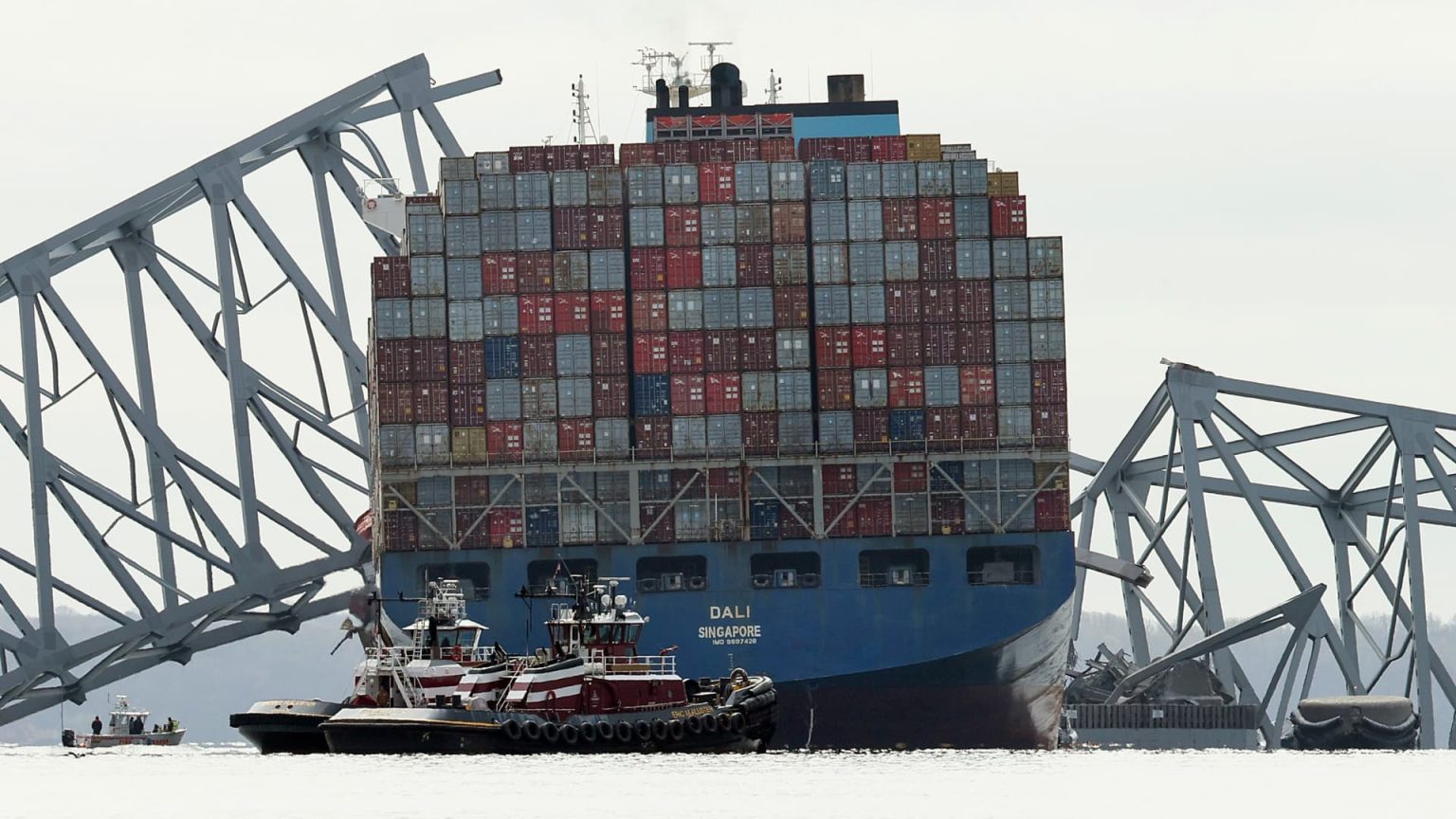Ocean carriers are declaring force majeure due to the Baltimore port bridge crisis, informing logistics companies and U.S. shippers that once cargo is dropped off at alternate ports, it’s the responsibility of the recipient to pick up. The issue arose after the deadly accident involving the 10,000-container capacity containership Dali colliding with the Francis Scott Key Bridge. While some carriers like CMA CGM, COSCO, and Evergreen are terminating their services once the containers reach alternate ports, Maersk is continuing to transport. Despite this, the lack of rapid updates on vessel transits is causing concerns among logistics managers.
The impact of the force majeure declaration is causing urgency in picking up diverted containers to avoid container late fees. ITS Logistics’ ContainerAI platform helps manage the logistics of containers, but the delay in updating discharged port information is causing issues in planning for container pick-ups. As the clock starts on free time for containers, detention, and demurrage fees can quickly add up, leading to worries about potential financial implications. To help in navigating the current supply chain challenges, the U.S Department of Transportation’s Freight Logistics Optimization Works platform is assisting in monitoring congestion and cargo shifts caused by the Baltimore port incident.
Despite the challenges faced, the FLOW program, which has expanded to over 70 participants, including major retailers and logistics providers, is being used as a tool to analyze real-time data on port congestion and cargo diversion trends. Ocean carriers and shippers are utilizing this data to evaluate diverting their cargo given the collapse of the Francis Scott Key Bridge. Companies like CH Robinson are leveraging the program to ensure that their customers’ cargo is redirected to operational ports efficiently and effectively. The platform is also aiding in the rescheduling of ocean bookings until the Port of Baltimore is operational again.
One of the key concerns among logistics companies is the availability of chassis for both truck and rail to handle the diverted cargo. Logistics managers worry about the extra freight impacting ports such as Savannah, Brunswick, Virginia, Charleston, and New York/New Jersey. While some ports like New York and Norfolk have sufficient supply, others like Norfolk or Charleston may face challenges due to limited chassis availability. Despite initial delays, the supply chain is expected to adapt to the diverted gateways to minimize congestion issues and ensure efficient handling of cargo.
As the situation continues to evolve, the Port of Virginia is working closely with ocean carriers to handle the surge in import and export cargoes redirected from Baltimore. With expertise in managing cargo surges, the Port of Virginia is ready to provide assistance to the Port of Baltimore. Companies impacted by the diversion, like OL USA with containers headed for various international destinations, are adjusting their shipments to alternate ports like New York/New Jersey and Virginia. The coordination between ocean carriers, ports, and logistics providers is crucial in ensuring the smooth flow of diverted cargo and minimizing disruptions in the supply chain.


